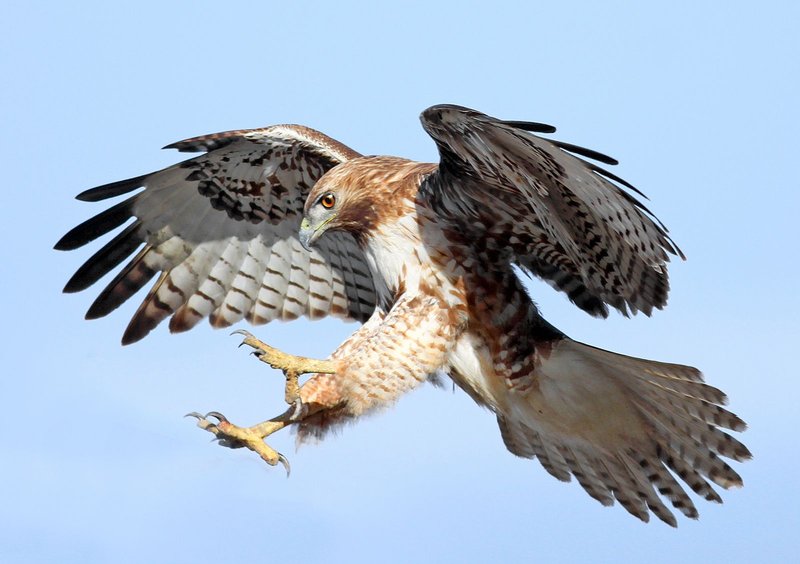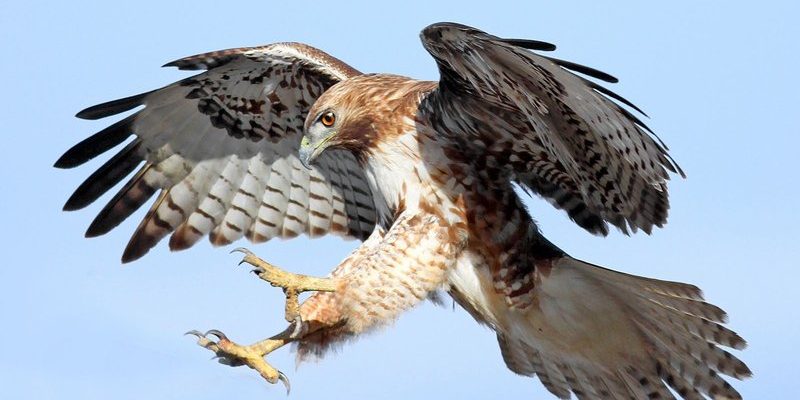
Conservation efforts focused on the red-tailed hawk aim to protect these incredible creatures and their habitats. Think of it like a protective umbrella shielding these birds from threats that could push them closer to the brink. You might wonder, what exactly are these threats, and how can we help? In this article, we’ll dive deep into the various conservation initiatives that are designed to ensure these hawks continue to grace our skies for generations to come.
Understanding the Red-Tailed Hawk and Its Habitat
The red-tailed hawk is easily recognized by its rusty-red tail and impressive wingspan, which can reach up to 4 feet. Found throughout North America, these birds thrive in diverse habitats ranging from forests and grasslands to urban areas. They’re adaptable, which helps explain their wide range. But even the most adaptable species face challenges.
Their preferred hunting grounds are often altered or destroyed due to human activity. Urban development, agriculture, and deforestation can lead to habitat loss, reducing the availability of small mammals they rely on for food. Moreover, as their habitats shrink, the chances of human-bird conflict increase, making it even more critical to understand their needs and protect their homes.
Protecting the red-tailed hawk isn’t just about preserving the species. It’s about ensuring that the ecosystems they inhabit stay healthy and balanced. A thriving environment supports not just hawks but countless other wildlife species as well.
Current Threats to Red-Tailed Hawks
Honestly, the threats facing red-tailed hawks are pretty diverse and, at times, daunting. One of the most significant issues is habitat destruction. As cities expand and agricultural land increases, the open spaces where these birds hunt become scarce. When their homes disappear, so do their food sources.
Another major concern is pesticides and other chemicals that pollute their environment. When small mammals consume these toxins, they accumulate in the hawks when they eat their prey. This bioaccumulation can lead to serious health issues, including reproductive problems and decreased life expectancy.
Lastly, collisions with vehicles and power lines pose significant risks. As hawks hunt from above, they may not see these dangers until it’s too late. Awareness of these threats is the first step in conservation efforts, allowing us to address them effectively.
Conservation Organizations Leading the Charge
Several dedicated organizations work tirelessly to protect the red-tailed hawk. Groups like the Audubon Society and the Peregrine Fund have programs specifically aimed at raptor conservation, including the red-tailed hawk. These organizations conduct research, provide education, and create outreach initiatives to raise awareness about the plight of these birds.
Some organizations focus on restoring habitats. They partner with landowners to create conservation easements, which protect key habitats from development. This collaborative approach ensures that red-tailed hawks and other wildlife have safe spaces to thrive, balancing human needs with environmental preservation.
Additionally, educational initiatives targeting schools and communities play a vital role. By fostering respect and understanding for these magnificent birds, these organizations inspire future generations to care about wildlife conservation.
Community Involvement in Conservation Efforts
You might be surprised to learn just how much local communities can impact conservation efforts for the red-tailed hawk. Many grassroots movements focus on habitat restoration, awareness campaigns, and citizen science projects. For example, birdwatching groups often organize local hikes or workshops to teach people about hawks and other raptors.
Community members can also participate in monitoring programs where they report sightings of red-tailed hawks and other wildlife. This data helps researchers track population trends and habitat use, ultimately informing conservation strategies.
Not to mention, involving local schools in conservation education can spark interest among young minds. They might not just become future birdwatchers but passionate wildlife advocates, helping to sustain these efforts long-term.
How You Can Help Protect Red-Tailed Hawks
You might be wondering what you can do to help protect the red-tailed hawk. The good news is, every little bit counts! Here are some simple actions you can take:
- Educate Yourself: Understanding the challenges facing red-tailed hawks is the first step. The more you know, the better equipped you are to help.
- Be an Advocate: Share information about red-tailed hawks with friends and family. Awareness is crucial for conservation.
- Support Conservation Organizations: Consider donating to or volunteering with organizations that focus on raptor conservation.
- Create Wildlife-friendly Spaces: If you have a yard, make it welcoming for local wildlife. Native plants provide food, and leaving some natural spaces undisturbed can help.
Every action matters, and collective efforts can lead to significant change.
Protecting Red-Tailed Hawk Habitats
Preserving habitats is central to conservation efforts for the red-tailed hawk. One of the most effective strategies is the creation of protected areas. National parks and wildlife refuges provide safe spaces for these birds to hunt and breed without the direct pressures of human activity. These protected areas not only benefit hawks but also countless other species.
Another strategy includes promoting sustainable land use practices. Collaborating with farmers and land developers to maintain natural habitats while still using the land for agriculture or development can create a win-win situation. This approach ensures that red-tailed hawks have hunting opportunities without sacrificing economic productivity.
Additionally, habitat restoration projects aim to rehabilitate degraded lands. By replanting native vegetation, creating wetlands, or restoring grasslands, these initiatives make it possible for red-tailed hawks to return to areas where they were once plentiful.
The Future of Red-Tailed Hawks: Hope Through Conservation
The future of the red-tailed hawk is tied directly to our conservation efforts. Thanks to ongoing research and community engagement, there’s hope for these remarkable birds. As awareness grows and more people get involved, we can create a brighter future for them and the ecosystems they inhabit.
Many organizations are already seeing positive results from their initiatives. For instance, some regions report stable or even increasing populations of red-tailed hawks thanks to habitat preservation and restoration efforts. While challenges remain, continued dedication and cooperation can lead to lasting changes.
In the end, protecting the red-tailed hawk is more than just saving a bird; it’s about maintaining the balance of our shared environment. Each effort we make paves the way for a healthier planet, rich with diverse wildlife, including those awe-inspiring hawks soaring above us.
Let’s keep our eyes on the skies and work together to ensure that future generations can enjoy the sight of these magnificent birds.

